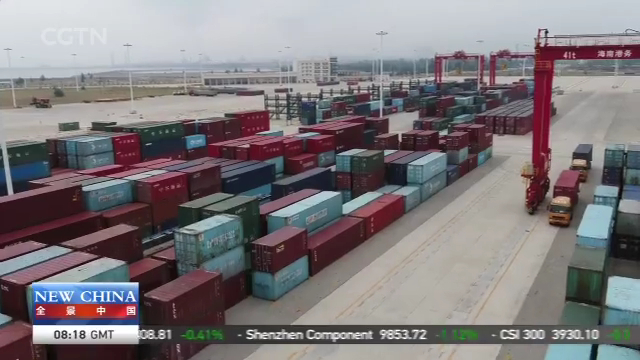
17:22, 11-Sep-2019
Celebrating 70 Years of New China: Foreign trade & manufacturing pillars of China's economic transformation
Updated
17:52, 11-Sep-2019

China's economic miracle has long been attributed to its opening up and reform policies, specifically over the past 40 years. But what fueled such growth, and which industries enabled the country to become the world's second-largest economy? CGTN's Omar Khan takes us a look at China's foreign trade and how it has changed over the years.
In 2013, China bypassed the United States as the world's largest trader of goods. An impressive triumph, given that in 1950, China's trade volume of goods was a mere 1.1 billion US dollars. By the end of 2018, that number sat at 4.6 trillion US dollars. And although China has now shifted its efforts toward a service-oriented economy, foreign trade will continue to play a pivotal role.
DR. ARAVIND YELERY, SENIOR FELLOW HSBC BUSINESS SCHOOL, PEKING UNIVERSITY, SHENZHEN "If you look at the foreign trade, it has, in trillions of dollars, it is difficult to imagine that foreign trade has been replaced by the services overnight, or in one year or two years, it is a process. And that process will take even a couple of decades."
China's annual trade growth remained below 10 percent between 1950 and 1977, the years of a planned economy. But following the opening-up and reform, trade grew at an average of 14.5 percent. Accounting for global trade totals, China's share expanded from 0.8 percent in 1978, to 11.8 percent last year. But given recent trade tensions with the US, and a move away from traditional manufacturing, what does that mean for those doing trade with China?
DAISY HUANG SENIOR MANAGER, DEZAN SHIRA & ASSOCIATES "I have no doubt that foreign investors will continue to come to China. But, probably they may change their focus, so I think 20 years ago, they were thinking of China as just a manufacturing hub, providing low-cost products. But now they're seeing China with an increasing middle class, and that's a huge market in terms of population. So you can find people looking for good quality, mid-level quality. So every new investor will be able to find a suitable marketplace."
Over the past several years, companies have relocated out of China, in search of cheaper trading hubs. Regardless of this reality, however, China's role in global supply chains and value chains remains unchallenged.
DAISY HUANG SENIOR MANAGER, DEZAN SHIRA & ASSOCIATES "Not all the cases are successful. They are still suffering from difficulties of sourcing from the local market, because China is still the biggest supply chain in the world. So for clothes, there are problems to find little accessories in order to finish the whole product. So they still need to source from China, and focus on production in Vietnam or Cambodia."
In the first half of this year, foreign trade expanded by 3.9 percent year on year, with total volumes reaching just over 2.1 trillion US dollars. China's central and western regions continue to play an ever-growing role, as their trade grew by 14 percent during the first 6 months of the year.
OMAR KHAN GUANGZHOU, GUANGDONG PROVINCE "China has signed a total of 17 free trade agreements with 25 trading partners. And with trade between Belt and Road countries and the ASEAN bloc also witnessing year on year increases, it's hard to imagine that China's ability in the field of imports and exports will be displaced in the near future. Omar Khan, CGTN, Guangzhou."
SITEMAP
Copyright © 2018 CGTN. Beijing ICP prepared NO.16065310-3
Copyright © 2018 CGTN. Beijing ICP prepared NO.16065310-3